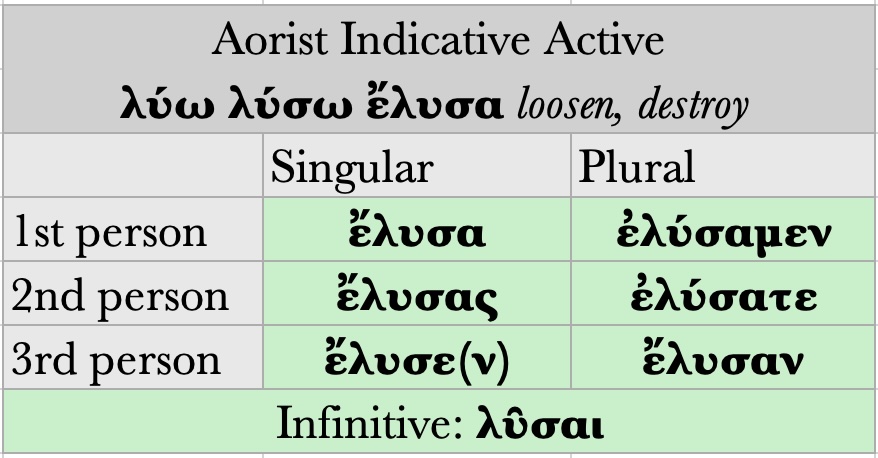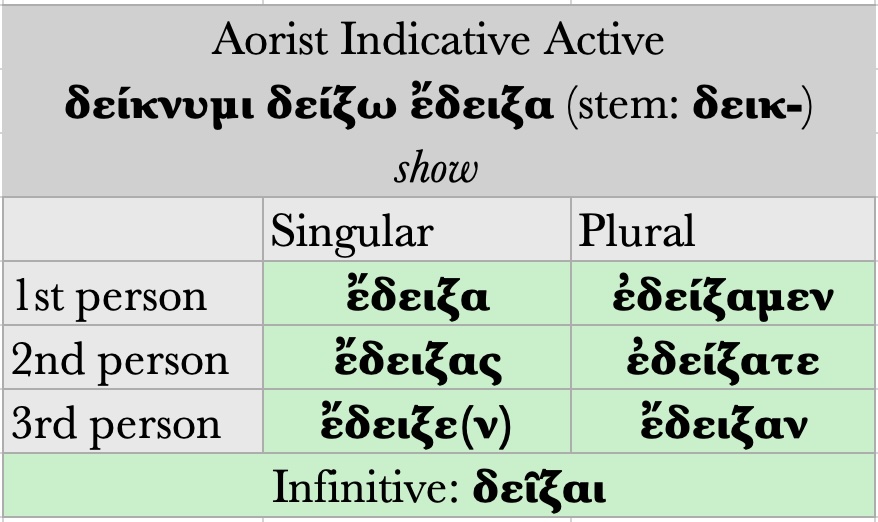28.5 To form the FIRST AORIST, the aorist marker –σα– is added to the stem of the verb, followed by the secondary endings. Though there are exceptions, the FIRST AORIST is particularly common with:
- athematic verbs, such as δείκνυ-μι
- stem: δεικ-
- thematic verbs that have identical "present tense" and verb stems, such as λύ-ω
- stem: λυ-
- contract verbs, such as ποιέ-ω
- stem: ποιε-, though as we saw with the future tense, the final vowel of the stem lengthens when followed by -σ: ποιη-
To begin, recall the secondary –μι verb endings:
28.6 When the secondary endings for –μι verbs were added to the first aorist marker –σα-, the FIRST AORIST endings evolved to become:
28.7 The formula to form the FIRST AORIST indicative, then, is:
- augment + verb stem + first aorist (-σα) marker + secondary endings
We noted earlier that ALL VERBS, regardless of whether they are thematic or athematic in the present tense, use THEMATIC (-ω verb) endings in the FUTURE TENSE. In just the same way, all FIRST AORISTS, regardless of whether they are thematic or athematic in the present tense, form their first aorists in the same way. Let us look at some examples.
We start with the verb stem:
- δεικ show
- λυ loosen, destroy
To the beginning of the verb stem we add an augment (ἐ):
- ἐδεικ show
- ἐλυ loosen, destroy
To this stem we now add our FIRST AORIST endings. Note that the ending for the FIRST AORIST INFINITIVE is -σαι.
(cf. S 383)
Remember: κ + σ = ξ








